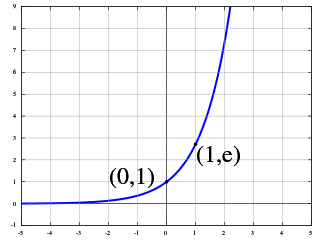Proof by induction
Theorem: Let  be a natural number. For
be a natural number. For  complex values
complex values  ,
,

and for  complex values
complex values  ,
, 
Proof: We perform a double induction. For  , we have
, we have

and

Now suppose both statements are true for some  .
.
We have  where
where 
by applying the induction hypothesis to  .
.
But if  implies
implies  implies
implies  , contradiction. Hence
, contradiction. Hence

completing that induction.
Note that for  ,
,

if  , then both sides are zero.
, then both sides are zero.
Using  and
and  , and applying the induction hypothesis to the values
, and applying the induction hypothesis to the values  ,
,

completing the other induction.
As an example, the expression  can be rearranged into a continued fraction.
can be rearranged into a continued fraction.

This can be applied to a sequence of any length, and will therefore also apply in the infinite case.
Examples
The exponential function
The exponential function ex is an entire function with a power series expansion that converges uniformly on every bounded domain in the complex plane.

The application of Euler's continued fraction formula is straightforward:

Applying an equivalence transformation that consists of clearing the fractions this example is simplified to

and we can be certain that this continued fraction converges uniformly on every bounded domain in the complex plane because it is equivalent to the power series for ex.
The natural logarithm
The Taylor series for the principal branch of the natural logarithm in the neighborhood of 1 is well known:

This series converges when |x| < 1 and can also be expressed as a sum of products: [3]

Applying Euler's continued fraction formula to this expression shows that

and using an equivalence transformation to clear all the fractions results in

This continued fraction converges when |x| < 1 because it is equivalent to the series from which it was derived. [3]
The trigonometric functions
The Taylor series of the sine function converges over the entire complex plane and can be expressed as the sum of products.

Euler's continued fraction formula can then be applied

An equivalence transformation is used to clear the denominators:

The same argument can be applied to the cosine function:


The inverse trigonometric functions
The inverse trigonometric functions can be represented as continued fractions.

An equivalence transformation yields

The continued fraction for the inverse tangent is straightforward:

A continued fraction for π
We can use the previous example involving the inverse tangent to construct a continued fraction representation of π. We note that

And setting x = 1 in the previous result, we obtain immediately































































